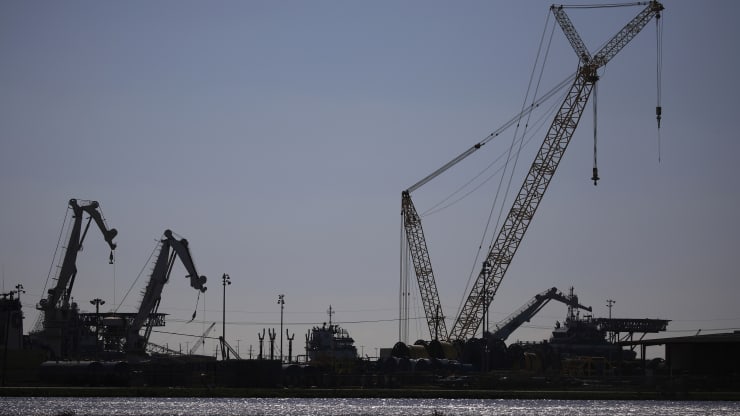
Oil prices rose on Friday, and were on track for a fifth consecutive weekly gain on expectations demand growth will outstrip supply and OPEC+ producers will be cautious in returning more supply to the market from August.
Brent was up 18 cents, or 0.2%, at $75.74 a barrel, heading for a 2.9% rise on the week. U.S. West Texas Intermediate (WTI) crude rose 29 cents, or 0.4%, at $73.59 a barrel, on track for a 2.6% weekly gain.
Both benchmark contracts settled at their highest levels since October 2018 on Thursday.
“Oil prices have been supported in recent weeks, benefiting from the ongoing decline in global oil inventories as oil demand continues to grind higher, although unevenly,” said UBS analyst Giovanni Staunovo.
“With larger oil inventory declines ahead, we expect oil prices to keep moving higher during 3Q21,” he added, referring to the third quarter of this year.
Oil prices also found support as the approval of a U.S. infrastructure bill boosted optimism over the energy demand outlook, analysts said.
All eyes are on the Organization of the Petroleum Exporting Countries, Russia and allies – together called OPEC+ – who are due to meet on July 1 to discuss further easing of their output cuts from August.
“The producer group has ample space to boost supply without derailing the drawdown in oil stocks, given the rosier demand outlook,” said Stephen Brennock of oil broker PVM.
On the demand side, the key factors OPEC+ will have to consider are strong growth in the United States, Europe and China, bolstered by vaccine rollouts and economies reopening, according to analysts who said this was countered by rising COVID-19 cases and outbreaks in other places.
The prospect of sanctions on Iran being lifted and more of its oil hitting the market anytime soon has dimmed, with a U.S. official saying “serious differences” remain over a range of issues over Tehran’s compliance with the 2015 nuclear deal.
U.S. Secretary of State Antony Blinken also said on Friday serious differences remained, but that he hoped an upcoming round of indirect talks would bridge them.
























